Posted by Elena del Valle on March 12, 2010

Guerrilla Marketing Goes Green
Jay Conrad Levinson, known for his 60 Guerrilla Marketing books, and Shel Horowitz, an environmental activist and marketer for more than 30 years, teamed up to write Guerrilla Marketing Goes Green Winning Strategies to Improve Your Profits and Your Plant ( Wiley, $21.95), a book about effective marketing with an environmental emphasis published this year. The book includes a Foreword by Stephen M.R. Covey, author, The Speed of Trust.
The 236-page softcover book, based heavily on Horowtiz’ Principled Profit: Marketing That Puts People First, is divided into three parts: The Way of the Golden Rule, The New Marketing Mindset, and Hands-On with Cooperative People Centered Marketing; discussed in 21 chapters. The authors start from the perspective that being environmentally friendly is what everyone seeks to do.
They promise to explain how readers can increase profits and lower costs by emphasizing ecologically sensitive and ethical policies; convert customers, suppliers and competitors into supporters; make business acquaintances joint-venture partners; and take advantage of social and traditional media to boost revenues and decrease advertising expenses.
Conrad Levinson has taught guerrilla marketing for ten years at the extension division of the University of California in Berkley. Prior to that he was senior vice-president at J. Walter Thompson, and creative director at Leo Burnett Advertising and in Europe.
Horowitz describes himself as an ethical and green marketing expert, book shepherd, writer, international speaker, consultant, community organizer, and frugalist. He is the author of the e-book, Painless Green: 111 Tips to Help the Environment, Lower Your Carbon Footprint, Cut Your Budget, and Improve Your Quality of Life-With No Negative Impact on Your Lifestyle.

Click here to buy Guerrilla Marketing Goes Green
Comments:
Filed Under: Books
Posted by Elena del Valle on March 10, 2010
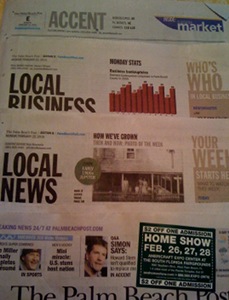
In the last few years, Americans (and others abroad) have witnessed the slow and painful breakdown of traditional print and broadcast media as the financial model that held up the media outlets became obsolete and a new one was not embraced well, quickly, efficiently, replaced with a better one or all of the above. While we wait for the dust to settle we rely on the media outlets and the journalists that remain to fill the large shoes of the many that are gutted or gone. That is a tall order. Now that they are teetering on the edge of disappearing, at least in some ways, many people have begun to realize how much they had come to rely on that news reporting in their daily lives.
Newspaper ad revenue took a nose dive a long time ago and doesn’t seem to be coming up for air any anytime soon. The industry had a 23 percent drop in ad revenue in the last two years, according to the State of the News Media 2009, a report about media in the United States. The researchers who prepared the report concluded that 20 percent or one of every five journalists working for newspapers in 2001 was no longer around by the end of 2008. They anticipated that journalist losses would be the worst in 2009. Other sources indicate this was the case.
In the newspaper segment alone more than 40,000 newspaper jobs were lost in 2009 and 21,000 were lost in 2008, according to the federal Bureau of Labor Statistics quoted in a December 2009 article by Joe Strupp of Editorandpublisher.com. That loss was more than any single year in the past 10 years. The experience and contacts of dozens upon dozens of senior journalists may be disappearing before our very eyes. As of the end of 2009 many senior newspaper editors were no longer at their jobs, and in most cases no longer in the newspaper industry. Last year lone some of the losses included senior men and women from well known national and local publications such as USA Today, Newsday, The Star-Ledger, The Oregonian, The San Diego Union-Tribune, Chicago Sun-Times and The Washington Times.
As media became fragmented and media executives searched for ad revenue to survive many lost touch with their audience. Local television stations shed news staff, saw falling, or for the lucky ones, flat ratings; and lost more revenue, 7 percent in an election year, according to the 2009 media report. Network news ad revenue fell and ratings dropped as well. Ethnic media too, which had shown signs of growth in the past, is now floundering. In 2008, the only shining light was cable news and many of those ratings increases dropped after the elections.
Meanwhile, in spite of the traditional media’s past disdain for online venues the audience has embraced new media and online media sources with a vengeance. In 2008, traffic to the top 50 news sites increased 27 percent and the number of people seeking news online went up 19 percent in two years. That could be the solution, some thought, except that the ad revenue did not follow the audience. Although two years ago ad revenue online grew about 30 percent per year two years in a row the ad revenue on online news sites stopped growing and continued declining in print.
Although nobody seems to know for sure some estimates place the revenue decline in the news industry at double previous numbers in 2008, the most recent year for which data seems available. There are those who believe the loss in revenue was even worse in network television. Last year was expected to be by far the worst all around.
The State of the News Media 2009 was the sixth edition of the Pew Project for Excellence in Journalism annual report on the state of the news media in the United States. Among the more than three dozen readers and several researchers the 2008 analysis covered 69,942 stories in an effort to find out what news media covered that year. The total was divided into 7,350 newspaper stories, 6,539 online stories, 19,796 network television stories, 21,892 cable news stories, and 14,365 radio stories.
Posted by Elena del Valle on March 9, 2010
Information provided by our Event Partner

Not to be missed! Discount for HispanicMPR Subscribers:
Horowitz Associates’ 10th Annual Multicultural Media for Multicultural America Forum is March 25, 2010, The Roosevelt Hotel, NYC. Network with Hispanic, African American, Asian, and global TV, technology, and advertising execs. Get the latest Horowitz survey data on multicultural/Hispanic consumers.
On the cusp of Census 2010, this year’s theme is The Multicultural Media Ecosystem. We’re all grappling with enormous shifts in how, when, and where consumers interact with media brands. Blockbuster Census 2010 data will likely be even more transformative than Census 2000 for affirming that multicultural America is America, and multicultural media is American media. And it’s now multiplatform.
The forum will focus on the dynamic, ever-changing relationships between television/broadband content providers, advertisers, distributors, and consumers in an increasingly complex, multiplatform media environment.
Posted by Elena del Valle on March 8, 2010
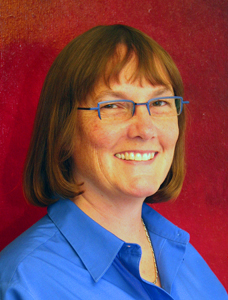
Author Janet Fouts
Photo: Janet Fouts
A podcast interview with Janet Fouts, author, Social Media Success (see California coach discusses social media basics) is available in the Podcast Section of Hispanic Marketing & Public Relations, HispanicMPR.com. During the podcast, Janet discusses social media issues based on her recently published book with Elena del Valle, host of the HispanicMPR.com podcast.
Janet, a seasoned entrepreneur, social media coach, author and speaker, co-founded Tatu Digital Media in 1996. She has been active in on-line community and web strategy for over 15 years. Her blog is JanetFouts.com.
To listen to the interview, scroll down until you see “Podcast” on the right hand side, then select “HMPR Janet Fouts ” click on the play button below or download the MP3 file to your iPod or MP3 player to listen on the go, in your car or at home. To download it, click on the arrow of the recording you wish to copy and save it to disk. The podcast will remain listed in the March 2010 section of the podcast archive.

Click here to buy Social Media Success
Posted by Elena del Valle on March 5, 2010
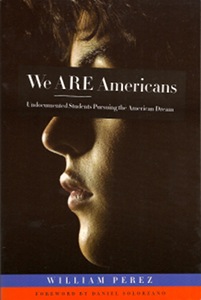
We Are Americans
William Perez, Ph.D., professor of education at Claremont Graduate University and an applied developmental psychologist, began interviewing undocumented students in 2006 to better understand their experiences growing up in the United States. To his surprise these students, part of a larger group of 3.1 million children and young adults whose immigration status in the country is illegal, exhibited a high percentage of civic involvement. He shared his findings and portions of the interviews with 16 undocumented students as well as four formerly undocumented students in a newly published book, We Are Americans Undocumented Students Pursuing the American Dream (Stylus Publishing, $22.50).
The 161-page book, published in 2009, is divided into five parts featuring the stories of high school, community college, and university students as well as college graduates, college graduates who were previously undocumented and a conclusion. He explains in the Conclusion that while 65,000 undocumented students graduate from high school in the United States every year, only one in five of these students is able to overcome the overwhelming odds to continue on to college.
He believes these undocumented students and their families are members of American society and should be granted legal status; that U.S.-born citizens have nothing to fear from these marginalized individuals and others who like them are impoverished in our nation. He advocates for the legal incorporation of undocumented youths and their families, indicating that for him it is a matter of “dignity and fundamental human rights.”
The book includes a Foreword by Daniel G. Solorzano, professor, Social Science and Comparative Education at the Graduate School of Education and Information Studies of the University of California, Los Angeles in which he sides with Perez: “Professor Perez’s research provides persuasive evidence that the talent we lose when we exclude undocumented students is a devastating loss to the United States…”

Click here to buy We Are Americans
Comments:
Filed Under: Books
Posted by Elena del Valle on March 4, 2010
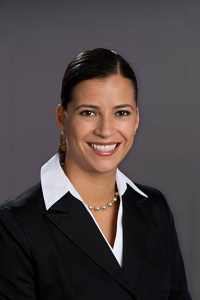
Ivette Mendez-Kelly, vice president, Sales and Distribution, Olympusat
Photo: Olympusat
Tomorrow night, at 8 p.m. ET, TV Chile will launch a 24-hour telethon to raise what executives hope will be $27 million in funds to assist the victims of the 8.8-magnitude earthquake that struck Chile February 27, 2010. In the United States, TV Chile is available in select Cablevision, Charter, Comcast, Cox, Suddenlink, Time Warner Cable and Verizon FiOS markets.
TV Chile plans to telecast the marathon commercial-free with live performances from Don Francisco, a TV personality, singer Ricardo Montaner and Tito Bambino, a reggaeton musician. The funds are being designated to build 30,000 emergency homes and buy relief supplies for those affected by the earthquake.
“We are honored, on behalf of TV Chile, to be able to provide an international platform to reach a millions of potential donors in the U.S.,” said Ivette Mendez-Kelly, vice president of Sales and Distribution for Olympusat’s Hispanic networks, in a press release. “Our hearts go out to our brothers and sisters in Chile who have been impacted by this unprecedented natural disaster.”
The Bank of Chile will collect the funds for the project. Supporters include El Hogar de Cristo (Christ’s Home), Un Techo para Chile (A Home for Chile), and the Fundación para la Superación de la Pobreza (Foundation to Overcome Poverty) and its program Servicio País (Country Service).
TV Chile is a family-oriented general entertainment television channel with 18 hours a day of live programming for Spanish speaking Latinos distributed across five continents. The company is based in Chile and programming is distributed in the United States, where it has an audience of about 500,000, by Olympusat. Formed in 1999, Olympusat, Inc. owns, operates and distributes independent linear and video on demand digital networks.
Comments:
Filed Under: Media
Posted by Elena del Valle on March 3, 2010
By Martha Galindo
CEO and president, Galindo Publicidad Inc.

CEO and president, Galindo Publicidad Inc.
Photo: Martha Galindo
Press releases are a great way to get some coverage from media outlets, in any language.They’re also a great way to break into new markets, especially foreign language ones. That’s a strategy more companies are starting to adopt. There are thousands of non-English language media outlets, and they offer a great opportunity for companies to get their message in front of a new audience.
The non-English U.S. market can be substantial. According to recent reports there are 2,453 unique U.S. Hispanic media outlets, including more than 1,200 print publications, and more than 1,000 TV and radio outlets and shows. There are also twenty AP-style wire services and news syndicates. In some cases these are the only media serving a particular Hispanic community. Any company with a product that fits this market would do well to send press releases to these key outlets.
Click here to read the entire article
Discover how to reach Latinos in language today with
“Hispanic Market Translation Issues” audio recording

Presenter Martha E. Galindo
Translation company owner Martha E. Galindo explains
-
Why it’s important to reach your clients in language
-
Ins and outs of translations issues
-
How to select a translator
-
What to expect
-
How to save on translation costs
-
Much more
Reach clients in language with ”Hispanic Market Translation Issues”
Posted by Elena del Valle on March 1, 2010
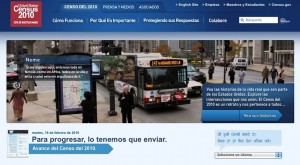
Click on image to enlarge
Photo: Census Bureau
Hoping to count every man, woman and child, including many whose first language is not English, in the country in its decennial tally the Census Bureau will mail out 120 million forms starting in March. The 2010 Census questionnaire will be available in six languages: English, Spanish, Russian, Chinese, Korean and Vietnamese. For the first time, the government entity will mail out 13 million bilingual, English-Spanish forms as part of the census taking effort mandated by the U.S. Constitution.
In an effort to allay the fears and overcome the language barrier for Spanish speakers living in the United States, the Census Bureau recently announced 2010.census.gov/espanol/, a Spanish language section of the census website. According to a spokesperson at the Census Bureau, the organization’s website is in English and Spanish is the only other language. The Spanish language pages are designed to inform “the more than 34 million Spanish-speaking people about the 2010 Census and to demonstrate to the Hispanic community that participation is easy, important and safe,” according to a press release distributed last month.
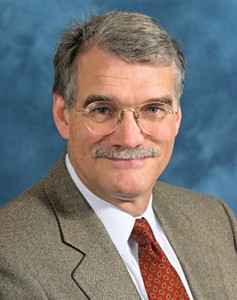
Robert M. Groves, director, Census Bureau
“Every decade, the census has to adjust how it reaches out to a diverse and growing population. These new and interactive Web pages are just such an example of how the Census Bureau is continuing to respond to new challenges,” said Robert M. Groves, director, Census Bureau. “Our hope is that visitors can relate and understand the importance of their participation in the 2010 Census and how they personally can have an impact on the well-being of their communities. Our Spanish language 2010 Census Web site demonstrates the Census Bureau’s commitment to ensuring a fair and accurate count of the Hispanic population. The 2010 Census is easy, important and safe, and we urge everyone to make sure they are counted.”
In addition to the Spanish version of the 2010 website, the Census Bureau plans a one-page description and a user guide explaining how to answer the census questionnaire in 59 languages. While the 2000 Census paid advertising campaign was in 17 languages, the 2010 Census plans to include 28 languages in its advertising campaign.






















